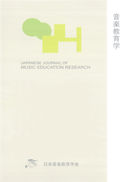Volume 46, Issue 2
Displaying 1-23 of 23 articles from this issue
- |<
- <
- 1
- >
- >|
-
2016Volume 46Issue 2 Pages 1-12
Published: 2016
Released on J-STAGE: March 31, 2018
Download PDF (1475K) -
2016Volume 46Issue 2 Pages 13-24
Published: 2016
Released on J-STAGE: March 31, 2018
Download PDF (1525K) -
2016Volume 46Issue 2 Pages 25-36
Published: 2016
Released on J-STAGE: March 31, 2018
Download PDF (1451K)
-
2016Volume 46Issue 2 Pages 37-38
Published: 2016
Released on J-STAGE: March 31, 2018
Download PDF (1304K) -
2016Volume 46Issue 2 Pages 39-40
Published: 2016
Released on J-STAGE: March 31, 2018
Download PDF (1304K) -
2016Volume 46Issue 2 Pages 41-42
Published: 2016
Released on J-STAGE: March 31, 2018
Download PDF (1305K)
-
2016Volume 46Issue 2 Pages 43-48
Published: 2016
Released on J-STAGE: March 31, 2018
Download PDF (1450K)
-
2016Volume 46Issue 2 Pages 49-56
Published: 2016
Released on J-STAGE: March 31, 2018
Download PDF (1389K)
-
2016Volume 46Issue 2 Pages 57-64
Published: 2016
Released on J-STAGE: March 31, 2018
Download PDF (1394K)
-
2016Volume 46Issue 2 Pages 65-72
Published: 2016
Released on J-STAGE: March 31, 2018
Download PDF (1401K)
-
2016Volume 46Issue 2 Pages 73-74
Published: 2016
Released on J-STAGE: March 31, 2018
Download PDF (1381K)
-
2016Volume 46Issue 2 Pages 75-76
Published: 2016
Released on J-STAGE: March 31, 2018
Download PDF (1370K)
-
2016Volume 46Issue 2 Pages 77-78
Published: 2016
Released on J-STAGE: March 31, 2018
Download PDF (1382K)
-
2016Volume 46Issue 2 Pages 79-80
Published: 2016
Released on J-STAGE: March 31, 2018
Download PDF (1370K)
-
2016Volume 46Issue 2 Pages 81-82
Published: 2016
Released on J-STAGE: March 31, 2018
Download PDF (1373K)
-
2016Volume 46Issue 2 Pages 83-84
Published: 2016
Released on J-STAGE: March 31, 2018
Download PDF (1393K)
-
2016Volume 46Issue 2 Pages 85-86
Published: 2016
Released on J-STAGE: March 31, 2018
Download PDF (1373K)
-
2016Volume 46Issue 2 Pages 87-88
Published: 2016
Released on J-STAGE: March 31, 2018
Download PDF (1372K)
-
2016Volume 46Issue 2 Pages 89-90
Published: 2016
Released on J-STAGE: March 31, 2018
Download PDF (1399K)
-
2016Volume 46Issue 2 Pages 91-92
Published: 2016
Released on J-STAGE: March 31, 2018
Download PDF (1371K)
-
2016Volume 46Issue 2 Pages 93-94
Published: 2016
Released on J-STAGE: March 31, 2018
Download PDF (1425K)
-
2016Volume 46Issue 2 Pages 95-96
Published: 2016
Released on J-STAGE: March 31, 2018
Download PDF (1382K)
-
2016Volume 46Issue 2 Pages 97-98
Published: 2016
Released on J-STAGE: March 31, 2018
Download PDF (1370K)
- |<
- <
- 1
- >
- >|
